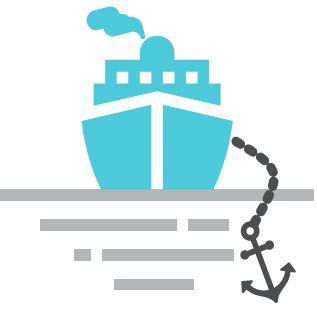Dive into the world of swashbuckling adventure with pirate tactics. Discover the cunning strategies of legendary pirate Calico Jack Rackam, master the art of loading and firing cannons, and learn the ruthless mantra of giving no quarter. Uncover how pirates used deception, the significance of the Jolly Roger, and the ferocity of boarding attacks. Hone your skills with cutlasses and daggers, from sharpening and throwing to defending against these deadly weapons.
- Load and Fire a Cannon
- Give no Quarter, Take no Quarter
- Looks can be Deceiving
- Jolly Roger
- Boarding with Evil Intent
- How Tom Use a Cutlass
- You Don’t Need Balls to Have Balls!
- Just Because I’m Cornered Doesn’t Mean I’m Defeated
- My Sword is Bigger Than Your Sword!
- Dagger
- How to Sharpen a Knife/Dagger
- How to Throw a Dagger
- How to Defend Against a Dagger
- Steal This Ship
- Henry Lewis Menchen
- Never Pay Your Crew; Reward Them With Shares of the Booty!
- Never Buy a Ship When You Can Simply Steal One!
- The Ships
- New Providence
- They Don’t Call it «No Prey, no Pay» for Nothin’
- Always Take Advantage of What Mother Nature Gives You
- Never let an Opportunity Pass
Explore the bravado of pirates with tips on cornered combat and boasting with «My Sword is Bigger Than Your Sword!» Whether you’re interested in historical piracy or looking for practical tips, this guide is your ultimate resource for pirate tactics.
«No time wasted, straight up alongside, every gun brought to play, and the prize boarded.»
Calico Jack Rackam (On Capturing Ships… and Women)
Pirates don’t work for wages. We live by the simple motto, «No prey, no pay». Unlike privateers – who only attack vessels from nations their king, queen, or country is at odds with – pirates have no such limitations. Any vessels we see are fair game. And once prey is sighted, all it takes is a majority vote from the crew and the hunt begins! Iron and lead first, followed by steel, this is the piratical way, the modus operandi by which we carry out our sinister trade. If the prey ship doesn’t surrender, first comes a massive cannonball onslaught from the big guns. Next comes the «softening» of the prey via precision musket marksmanship and ungodly gunfire from the swivel guns (packed with grapeshot), blunderbusses (firing scattershot), and close-aim pistol fire. Finally, the call to board is given and a maniacal horde of pirates will crest the gunwales and swarm the prey’s deck, swinging boarding axes, slashing with cutlasses, and firing flintlocks.
In the initial stages of the stalk, a pirate ship will shadow its prey while the captain determines whether the odds of victory (based on the opposing ship’s armament and number of visible crewmen) are in their favor, exactly as advocated by famed Chinese military general and strategist, Sun Tzu, some 2 200 years ago. Assuming the captain likes what he sees, the pirate ship will move in close, hoist the Jolly Roger so the other crew knows exactly who – and what – they are dealing with, and then fire a warning shot across the prize’s bow, giving them an opportunity to surrender with little or no bloodshed. But the perfunctory «surrender or else» cannon shot isn’t the only frightening tactic employed to signify that a floating spectacle of death is in their midst.
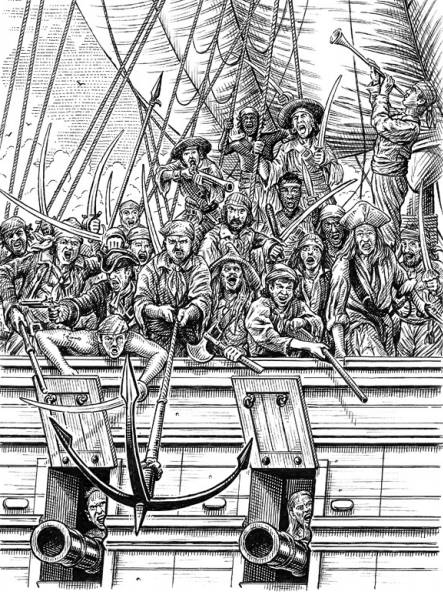
The pirate crew will also begin vaporing – screaming vicious war cries and horrific death threats while flailing and banging cutlasses and boarding axes against the gunwales of the ship. And if a musician is aboard, his furious fiddle play, blaring horn blasts, or ominous drumbeats will add to the raucous din, ratcheting up the crew’s unbearable chanting to what sounds like a fever pitch straight from the depths of hell.
Load and Fire a Cannon
1 A pirate ship’s great guns (cannons) are mounted atop four-wheeled carriages, allowing them to roll in and out of the gun ports for faster firing and reloading.
2 Prior to loading, it is absolutely vital that a member of the gun crew inspect the barrel to insure it is empty and clean. It is equally vital that the cannon inspector not be smoking a pipe while performing the task for obvious reasons. If he is, rest assured it will be the last time he makes that mistake – or any mistake for that matter!
3 If the cannon has recently been fired, the bore must first be swabbed with a damp sponge to remove any remaining live embers before reloading, otherwise there will be no live gun crew!
4 To load the cannon, a four-man gun crew has to run the gun inside the ship’s gunwale and put a powder bag (charge) down the front of the barrel, followed by the cannonball.
5 A ramrod is then used to push the ball and charge together at the bottom of the barrel.
6 Each cannon has a vent hole drilled at the top rear of the barrel, allowing a fuse to be inserted, conveying flame to the charge. Most fuses are approximately six inches long, giving gun crews approximately ten seconds to get clear and cover their ears before the cannon discharges.
7 As soon as the cannon is loaded, the gun is run out through the gunport and the gunner sets the aim.
8 Once the command to fire is given, the fuse is lit and BOOM!
9 Although a typical four-pounder can fire a roundshot (cannonball) about a thousand yards, maximum accuracy is only about five hundred feet, so all shots must be properly positioned.
10 The loading and firing routine is repeated over and over and over again until the prey surrenders or the gun crew runs out of ammunition.
If all goes well, this barrage of sound and barbarism will cause the prey vessel to strike her colors, signifying her submission.
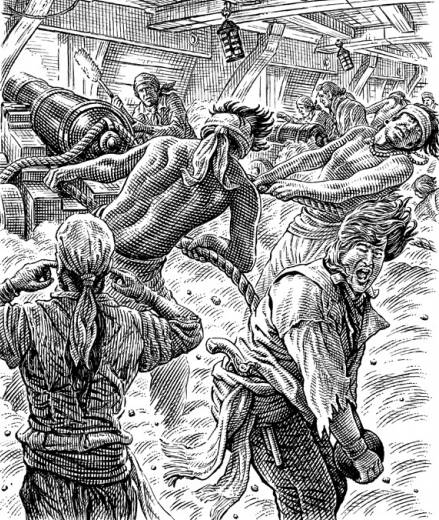
However, while we prefer to capture a prize without a fight – avoiding the many gruesome injuries that go hand in hand with battles at sea, not to mention the very real possibility of having our ship damaged to the point of sinking, thereby scattering our hardearned plunder across the ocean floor – we are ready, willing, and most certainly able to attack and slaughter anything and everything in our path.
If the prey refuses to strike her colors, we often hoist a red flag, declaring no quarter. Immediately, our pirate vessel will unleash her great guns, intent on destroying the prize ship’s mast – to prevent her from escaping – as well as to cause as much topside damage as possible, for sinking the ship would be a foolish undertaking; the prize is far more valuable afloat than in Neptune’s garden, to be used as another Typical Activities Aboard the Pirate Ship, the Pirate Codepirate ship or sold/traded later on.
When in small-arms range, the harassment will intensify via strategic musket fire, targeting the navigator and gun crews to prevent evasive maneuvers or return cannon fire. Boarders – armed with a wicked array of loaded flintlocks and freshly sharpened cutlasses or boarding axes, standing ready along the rail as our pirate vessel navigates amidships – throw grenadoes and caltrops onto the prize’s deck, adding to the calamity and confusion. When the distance between ships is no more, grappling hooks are tossed fore and aft, lashing the two vessels together. To prevent separation, the ends of the irons are customarily attached to long lengths of chain to prevent them from being severed by prey ship crewmen. The final action before the actual boarding involves skilled marksmen making surgically precise shots, clearing not only the deck but also the masts and spars aloft in a concerted effort to protect the boarding party.
The call to board will immediately follow, coming from the quartermaster upon the captain’s signal. The best attack plan for boarding a vessel requires the pirate ship to lay alongside her prize, ideally from the weather gauge (between wind and prey) and amidships. A clever pirate captain will maneuver his ship between the wind and his prey, putting the bow alongside his enemy’s waist, so that his midship is snugged up close to the prey’s quarter, allowing the pirate crew to board fast and aggressively by her shrouds. Trust me, if the prize’s crew was terrified when they first saw the Jolly Roger, the sight of a murderous horde climbing over their gunwales, weapons up and ready, intent on delivering agony and death with every trigger stroke or swing causes many to jump ship, hoping the sea will be less savage than the invaders. Oftentimes, it is.
Boarding is far from serene and systematic. With plunder on our minds and murder in our hearts, we’ll use any means necessary to get onto the prize. For some, it’s as simple as using boarding pikes to create a little distance between themselves and the prey’s crew. Others, hoping for a sneak attack of sorts, will swing from the riggings and drop down on the unsuspecting crewmen. And then there are those who simply leap over the gunwales, hacking, slashing, and shooting their way into the violent fray.
The battle on deck is a brutal and bloody business. There are no rules. Bashing in an opponent’s skull with a boarding ax, or slicing off limbs and digits, are all common practices. The goal is to win at all costs. Fight fast and fight furious. And don’t get caught up with one opponent or opponents for too long lest you fall victim to an attack from behind. Once pirates engage in battle, there are only two outcomes: victory (and the spoils that come with it) or death, either on the ship or via execution for piracy later on.
Once the enemy crew is vanquished either by total annihilation or, if they are smart, surrender – anything of use or value is plundered. Coins, jewels, precious metals, medicine, food and water, weapons – if it can be sold, spent, or used, we take it.
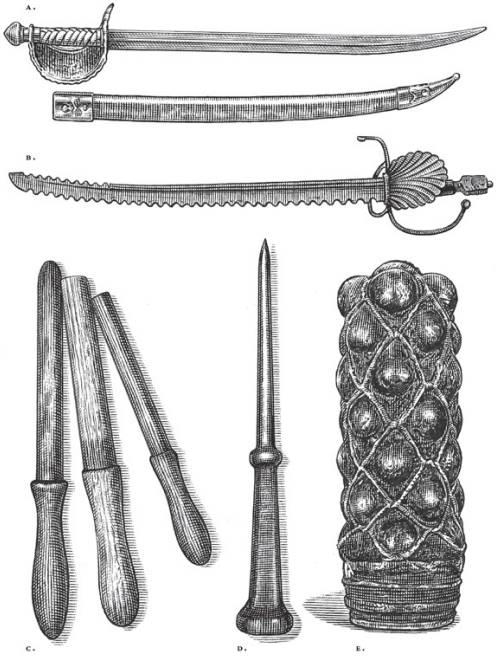
Cutlass (a)
Shorter but thicker in width than a standard cavalry saber, the majority of cutlasses – particularly those of the eighteenth-century French Navy – are slightly curved and are the preferred sidearm for every country’s navy. You can swing them with reckless abandon without fear of getting caught in the riggings. Most cutlasses have a fuller (sometimes referred to as a blood groove) running from the hilt to within seven inches of the point. Pirates are famous for using cutlasses, but there is no evidence to support the widespread belief that Caribbean buccaneers invented them.
Dusagge Cutlass (b)
While all cutlasses can inflict nasty wounds, the German-made Dusagge cutlass is especially fearsome, thanks to the many serrations on both sides of its broad, curved blade. However, the serrations weren’t added for greater effectiveness against flesh and bone – they are intended to catch and slash through rigging lines commonly encountered during shipboard combat.
Belaying pin (c)
A solid hardwood bar (one to three feet long) inserted along the inside of a ship’s bulwarks to secure lines. Because of its bulbous top portion and cylindrical shaft, a belaying pin makes a formidable club/impact weapon.
Marlinspike (d)
Made of iron or steel with a pointed end, marlinspikes (ranging from six to eighteen inches long) are used for a variety of deck chores, from separating strands of rope to prying open crates and barrels. Small and concealable, they are also the perfect size to be used as dagger-like weapons, making them ideal for those with mutiny on their mind.
Grapeshot (e)
Loosely packed metal slugs loaded in a canvas bag or packed directly into the swivel guns. This type of load is often improvised in the:
- form of rocks;
- shards of glass;
- chain links;
- and any other metal scraps lying around.
Give no Quarter, Take no Quarter
Beginning with the early privateering days of SIR FRANCIS DRAKE (a. k. a. «The Dragon»), when the red flag is hoisted it means no quarter to the prey. No mercy. No survivors. This simple act usually knocks the fight out of all but the most pigheaded captains, the majority of whom pay for their stubbornness with their lives and, sadly, the lives of their crew.
Looks can be Deceiving
In January 1698, WILLIAM KIDD, then privateer captain of the Adventure Galley, and later a pirate, spotted a ship in the distance flying French colors. Kidd quickly replaced his English flag (Union Jack) with a French flag and then sailed close enough to the large Quedah Merchant to fire a shot across her bow and order her surrender. The captain showed Kidd a French pass, hoping this would grant him freedom to sail. With a sly smile, Kidd ordered his ship’s French flag be hauled to the deck and hoisted the Union Jack once again, thus declaring the Quedah Merchant a legal prize.
Jolly Roger
A Jolly Roger is a flag that identifies the ship flying it as a pirate vessel. While the skull and crossbones is the most common of these flags, many great pirate captains have custom colors that further identify exactly who is attacking.
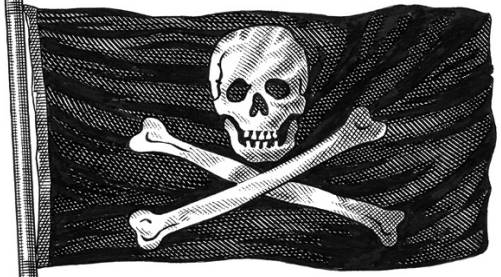
As such, some Jolly Rogers elicit significantly more fear than others. CALICO JACK RACKAM’s design is a skull with a pair of crossed swords below it. Blackbeard’s flag pictures a devil stabbing a bleeding heart with a spear. CHRISTOPHER CONDENT’S flag features not one but three skulls and crossbones. And EDWARD LOW’S flag shows an eerie red skeleton against a black background.
Boarding with Evil Intent
Grenadoes
Pirates use two types of grenadoes (a. k. a. grenades): those designed to obscure and confuse, and those intended to maim and kill.
Smoke grenades – ceramic shells stuffed with tar and rags with a fuse protruding from the top – are lit and thrown onto a prize’s deck, where they smash open and create dense black smokescreens.
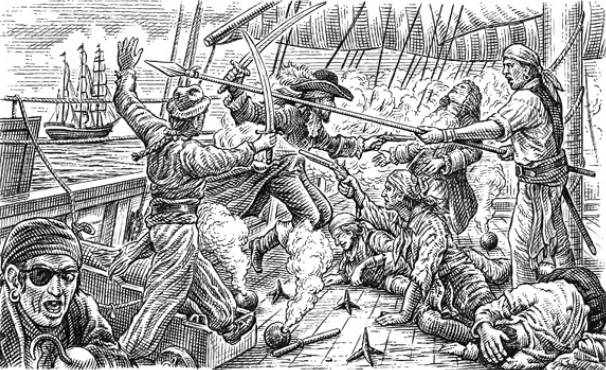
The other grenades (a specialty of Blackbeard’s) are empty bottles packed with black powder, shot, and small pieces of lead. The explosion on or below deck will do little, if any, damage to the prize but will produce brutal, often fatal, injuries among the prey ship’s crew.
Caltrops («Crowsfeet»)
Made of scrap iron and featuring (at least) four wickedly sharp points, caltrops are designed to be tossed onto the deck of a ship and, no matter how they land, always have one point facing up, thereby delivering painful piercing injuries to barefoot and fallen sailors.
Boarding Pike
A long wooden shaft measuring ten to twenty feet in length with a sharpened steel or iron spearhead affixed to the end.
How Tom Use a Cutlass
While many pirates simply prefer to swing and hack like maniacs with no real method to their madness, others take a far more artful approach.
- Striking major organs (heart, lungs, brain, etc.) in the torso and head will end a fight quickly; however, there are less defensible areas you can attack to curtail a battle just as fast.
- Feint for the head/torso, then strike at the extremities. Slicing off an opponent’s elbow, especially while his sword is raised or «cocked and locked», will disarm him, literally.
- Or feint high and go low, slicing out your enemy’s legs from under him. This maneuver is extremely hard to block, and, even if your opponent is still among the living, the battle is over – he won’t be able to come after you.
- Never jump in the air to attack. This commits you. When gravity takes over, you’re coming down whether you like it or not. A skilled opponent can simply step back, out of harm’s way, and mount an offensive when you land.
- The same holds true for spinning. Even if you’re extremely fast, turning your back on an opponent, especially one armed with an edged weapon, is very risky and usually has disastrous results.
- The only time you should risk clashing swords with an opponent is to deflect his blade from your body. The risk of breaking your weapon is too great. Better to wait for an opening and then strike.
- Control your attack. Don’t overswing. A big miss, in which your momentum carries your blade past your intended target, will leave you defenseless, exposed, and ripe for the picking.
- Use a secondary weapon in tandem with the cutlass. While some pirates are demons with both a dagger and cutlass, other weapons, such as nets, rope coils, and lengths of chain can confuse, distract, or even trap an opponent, making delivering the coup de grâce with your cutlass that much easier.
- And yes, it’s far easier to forego your cutlass and simply shoot your opponent with a flintlock.
You Don’t Need Balls to Have Balls!
Anchored off the north coast of Jamaica in October 1720, CALICO JACK and his male crewmen were getting raucously drunk below decks when they were surprised by a heavily armed privateer sloop hunting down pirates. Calico Jack’s drunken crew hid in the hold but ANNE BONNY and MARY READ immediately sprang into action with pistols firing, curses flying, and cutlasses and axes slashing and hacking at everyone in their path. When they realized the battle was lost, Mary turned her rage below decks and fired a shot down into the ship’s hold, screaming for the crew to «come up and fight like men».
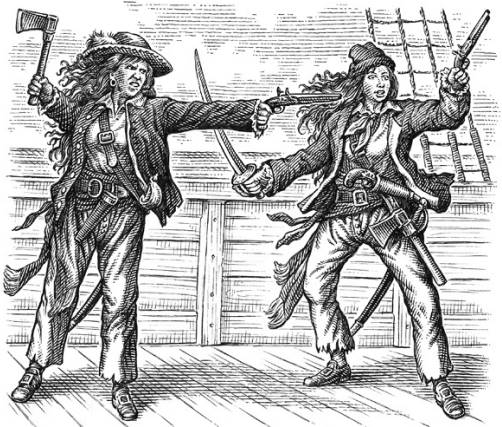
Prisoners, for the most part, are treated fairly. Despite many tales to the contrary, women and children are almost never harassed (or worse). Sailors, depending on their desire and skills, are sometimes given the opportunity to join our pirate crew and many jump at the chance. Those who opt out of the brethren are usually cast off in a long boat (with some provisions, for not all pirates are complete bastards) or left on the first island or landmass we encounter. But the enemy captain often faces an entirely different fate a fate decided by his own crew.
Many pirate captains take it upon themselves to mete out a little maritime justice. They ask the conquered prey ship’s crew whether their captain was an honorable and just man, worthy of a continued existence. If the defeated crew supports their leader, the captain is spared. But, if it turned out the captain is brazen, cruel, or a poor shepherd of the sea, Davy Jones is delivered another tortured soul, one with a title before his name.
When it’s over, we return to the pirate ship, attend to our injured, divvy up the booty every man gets a share; those suffering severe but survivable wounds get extra and set off in search of another prize.
The Barbadoes ships kept an easy sail till the Pyrates came up with them, and then Bartholomew Roberts gave them a gun, expecting they would have immediately struck to his piratical flag, but instead thereof, he was forced to receive the fire of a broadside, with three huzzas at the same time. So that an engagement ensued, but Roberts being hardly put to it, was obliged to crowd all the sail the sloop would bear, to get off. The galley failing pretty well, kept company for a long while, keeping a constant fire, which gall’d the Pyrate. However, at length by throwing over their guns, and other heavy goods, and thereby light’ning the vessel, they, with much ado, got clear. But Roberts could never endure a Barbadoes man afterwards, and when any ships belonging to that island fell in his way, he was more particularly severe to them than others. CAPTAIN CHARLES JOHNSON, A General History of the Pyrates (1726)
Just Because I’m Cornered Doesn’t Mean I’m Defeated
In 1669, after HENRY MORGAN sacked Maracaibo, his ships were trapped inside the bottle-shaped Lake Maracaibo by three heavily armed Spanish ships – the 40-gun Magdalena, the 30-gun San Luis, and the 30-gun Soledad – all waiting at the narrow mouth of the lake for Morgan to exit. So Morgan directed his buccaneers to convert one of his captured ships into a «fire ship». First, they filled the vessel with black powder, pitch, tar, and sulfur. Then they positioned drums in the gun ports to give the appearance of cannons, along with vertical timbers disguised as crewmembers manning weapons. Finally, they cut the ship’s planks to effect a devastating, shattering force when the gunpowder exploded. Captain Morgan then sailed his pirate flotilla into the mouth of the lake with the fire ship leading the way, steering directly toward the MAGDALENA. The fire ship crashed into the monstrous 40 – gunner and exploded, obliterating the vessel. Morgan’s force then captured the Soledad. In an interesting twist, the Spanish elected to sink the San Luis themselves to prevent it from becoming yet another Morgan prize.
My Sword is Bigger Than Your Sword!
In the seventeenth century, FRANçOIS L’OLONNAIS, the «cutlass buccaneer», was extremely proficient with a cutlass, both as a weapon and as an interrogation tool. When it came to getting his captives to talk, François would hit the unlucky individuals with the flat of his cutlass’s blade until they divulged where they’d hidden their valuables.
Dagger
Daggers are every pirate’s general-purpose knife and last-ditch backup weapon.

Smaller blades, no longer than six inches, are both easier to conceal and easier to wield, especially in close-quarters combat.
How to Sharpen a Knife/Dagger
Common mistakes when it comes to sharpening any blade include a failure to establish a new edge, uncontrolled bevel angles, and leaving the final bevel too rough.
1 First, pick an angle at which to sharpen your knife. If you already know what angle your knife is sharpened at, stay with it. Otherwise, choose an angle of 10 to 30 degrees per side.
2 The shallower the angle, the sharper the edge; steeper angles are far more durable.
3 Select the angle/edge based on use. If it’s defensive only, sharpness is key. If it’s primarily for camp use, go with a more durable grind.
4 When in doubt, 17 degrees is a good compromise.
5 Use an angle guide (if available) to control your edge’s angle. Without an angle guide, you’ll have to do it by hand, which is difficult and requires a solid perception of angles.
6 For a symmetrical edge, drag the knife across a lubricated (oil or water) stone in the opposite direction you would move it to slice a thin layer off the stone. This will allow a burr to form, prolonging the sharpening stone’s life.
7 Continue grinding at this angle until the grind goes approximately halfway through the steel.
8 Now flip the knife over and sharpen the other side of the blade until a new edge is created. This will be easy to determine when a burr has been raised (one bevel is ground until it meets another). Although not always visible, you should be able to feel it with your finger.
9 Flip the knife and sharpen the opposite side of the blade. For a single-sided grind/chisel grind, do not flip.
10 Remove the burr by holding the blade at the same angle and moving it in the opposite direction as in the previous steps.
11 If you plan on using your knife for push cutting (cutting straight down without sliding blade across the object, used more with camp knives than combat/defensive knives), you may elect to polish or strop the edge-sharpen/realign the edge without removing any metal, usually with a flexible strip of leather or canvas.
12 A good indicator of a sharp edge without dull spots is its ability (or rather its inability) to reflect light. Dull blades will reflect light along the edge; sharp blades will not.
13 Never test your blade’s sharpness by dragging a finger along the edge. Instead, try cutting a loosely held piece of paper, or slice someone else’s finger or neck.
How to Throw a Dagger
1 Determine the dagger’s fulcrum (center of gravity) by balancing it sideways across your index finger, adjusting its position until level.
2 With the blade facing you, grip the dagger with your thumb and the side of your index finger on the fulcrum. Your thumb (top) and finger (bottom) should cross at a 90-degree angle; the dagger is technically still balanced on the side of your finger, thumb holding it in place.
3 Raise your elbow to eye level (thumb facing sky), bending your arm so the dagger is a few inches above and to the side of your head.
4 Step forward with your opposite leg and bring your arm down and out in one smooth motion.
5 Wrist should be straight but relaxed.
6 As your arm becomes fully extended, look down your wrist, lining up your thumb with the handle of the dagger and the intended target.
7 Once your hand reaches eye level, draw an imaginary line from the tip of your thumb, up the handle’s center, and through the target (at butt of handle). This is the throw’s release point.
8 Release with your thumb first, allowing the dagger to roll off your index finger. This will initiate the rotation, stabilizing the dagger.
9 Timing is everything. Too much pressure and the dagger will over-rotate, flying at a down angle, thereby missing low.
10 Throwing your dagger should only be considered under «worst-case scenario» circumstances. Unless you hit and incapacitate your enemy, throwing your only weapon away will leave you unarmed and at a severe disadvantage over an armed opponent, and then you can kiss your arse good-bye.
How to Defend Against a Dagger
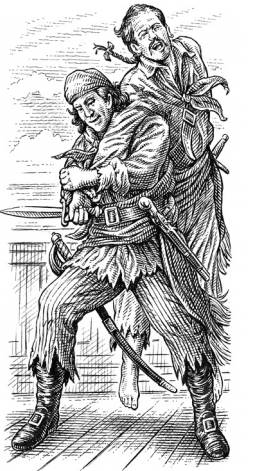
To defend against a THRUST, whereby your attacker stabs straight in toward your gut, the dagger in his right hand:
1 First and foremost, always give your attacker less body (and vital areas) to target by turning sideways, similar to a boxer’s stance, your weight balanced. This holds true for any form of defense.
2 Hop, step, or slide backward, pulling your stomach as far away as possible from the dagger thrust.
3 Simultaneously, hunch over and shoot both hands (with thumbs overlapped) on top of the dagger hand’s wrist and extend your elbows, exerting downward force.
4 Tightly grasp your attacker’s wrist and redirect dagger – using attacker’s momentum – past your right side and up into the air with a pulling action that maintains the attacker’s arm in an extended (and now vulnerable) posture.
5 Step under attacker’s arm with your left leg (your back to attacker).
6 Quickly and violently yank the attacker’s arm (elbow) down forcibly on top of your left shoulder, snapping your opponent’s arm in half. If you hear a sickening crack and a scream, you did it right!
To defend against an OUTSIDE-IN SLASH, whereby your attacker slashes right to left – as if aiming for your face – the dagger in his right hand:
1 Sidestep right while pulling your head away from the direction of the dagger and simultaneously blocking the attack with your left hand on the inside of the attacker’s dagger hand (in this case, right) at the wrist.
2 Tightly grasp the wrist with your left hand and hold away from your face.
3 Using your right hand, shoot a ridge hand (the web of skin between thumb and forefinger) blow into the attacker’s throat.
4 Bring right hand onto the attacker’s wrist to support your left-handed grasp.
5 Step through with your right leg (your back to attacker) under the attacker’s arm and swing dagger hand into a high arc as you continue to step through with your left leg.
6 Continue the momentum of the arc by finishing with a final thrust of the dagger hand into the attacker’s own gut.
7 Step back and watch as the dagger-impaled attacker slumps to the floor.
To defend against an INSIDE-OUT SLASH, whereby your attacker makes a backhanded slash at your face (usually following a missed outside-in slash), the dagger in his right hand:
1 Sidestep left while pulling your head away from the direction of the dagger and simultaneously blocking the attack with your right hand on the back of the attacker’s dagger hand at the wrist.
2 Tightly grasp the attacker’s wrist and hold away from your face.
3 Twist your hips to the right, throwing your left forearm into the back of the attacker’s elbow, as your right hand pulls his wrist.
4 This maneuver will turn your forearm into a fulcrum. The attacker’s shoulder and wrist are moving in an opposite direction of his elbow, causing it to dislocate and making him drop the dagger.
5 Finish off your now-injured would-be attacker in any number of ways, or simply pick up the dagger and walk away.
6 The heck with just walking away. You’re a pirate. Kill your enemy with his own weapon!
Steal This Ship
«Every normal man must be tempted at times to spit on his hands, hoist the black flag, and begin slitting throats».
Henry Lewis Menchen
From the nimble, shallow-draft sloops to the robust, multi-mast frigates, and vessels of every possible size and description in between, pirates have myriad ships from which to choose. But regardless of which vessel is selected as a mobile base of operations, it must fulfill three important criteria.
First, the ship must be a suitable means of housing. Pirates live where they work, so the ship needs to be large enough to properly contain and support the entire crew, along with all the life-sustaining provisions, necessary tools and weaponry, and, perhaps most important, the hardearned plunder.
Second, as a means of transportation, the ship has to be both swift and strong with no exceptions. Swift in that she is fast and nimble enough to outsail and outmaneuver her prey, while simultaneously being able to escape from her enemies (of which there are many). Strong in that she can handle whatever Mother Nature throws at her, with conditions varying greatly depending on the body of water she roams.
Finally, the ship needs to be sufficiently armed to the point that, upon first sight, she is instantly viewed as a force of fear and destruction, persuasive enough to compel many (if not all) of her prey to abandon all hope and surrender immediately or suffer the consequences. By the same token, for those marks who do not submit, or for any enemies who see fit to attack her, the ship’s bite has to equal or exceed its bark.
Once the vessel of choice is procured by whatever means possible – preferably via plunder or theft, for no true pirate would ever stoop so low as to actually buy a ship – the ship is refitted to suit the Review of Traditional Pirates Food and Drinkspirates’ specific needs.
In most cases, the first order of business is to eliminate much of the interior space normally divided into individual compartments for carrying cargo. The crew will remove the bulkheads, knock down cabin walls, cut down quarterdecks, and make the ship flush fore and aft. Large holes are also carved into the ship’s sides to create new gun ports, assuming sufficient ports don’t already exist. Swivel guns are mounted in stanchions along the gunwales. Anything else decreasing the speed and handling of the ship is tossed overboard. Pirate ships have crews that significantly outnumber those on traditional merchant ships, and the men need room to roam and carry out attacks.
Pirates are fond of outnumbering and overwhelming victims – the en masse, «screaming avalanche» approach works very well – so space is always of the essence.
Although most pirates prefer smaller and faster sloops like schooners and brigantine ships (which are also easier to steal), there are some advantages to the larger triple-mast, square-rigged warships used by the likes of:
- Captain Kidd (34-gun Adventure Galley);
- William Moody (35-gun Rising Sun);
- Blackbeard (40-gun Queen Anne’s Revenge);
- Black Bart Roberts (42-gun Royal Fortune);
- and Henry Every (46-gun Fancy).
Not only are these larger vessels far more seaworthy and stable in higher seas, they also provide a platform for more great guns and a larger crew, making it easier to overpower wealthy merchantmen and East Indian galleons whose holds are always chock-full of valuable cargo.
Some pirate captains prefer to expand their influence with each prize they capture by creating, and subsequently adding to, a fleet of pirate ships. In most cases, the captain will appoint his quartermaster to command the newly acquired prize to sail in consort with the flagship, creating an overwhelming – and often deadly – experience for the next prey ship they encounter. A few examples:
A 1671, when Henry Morgan sailed from Port Royal, Jamaica, to sack and plunder Panama, his fleet consisted of thirty-seven vessels, ranging from 4-gunners to 22-gunners.
B 1718, Blackbeard’s blockade of Charleston utilized four ships: the 40-gun Queen Anne’s Revenge, the 10-gun Adventure, and two smaller sloops armed with 6 and 8 guns respectively.
C 1721, Black Bart Roberts commanded a fleet of four vessels:
- the 42-gun Royal Fortune;
- the 32-gun Great Ranger;
- the 30-gun Sea King;
- and a 16-gun sloop.
Never Pay Your Crew; Reward Them With Shares of the Booty!
In 1692, THOMAS TEW, with a commission from the Governor of Bermuda in his pocket, set sail as directed to attack French holdings on Africa’s Gambia River. However, once at sea, Tew assembled his crew on deck and explained that not only was there little to gain in Africa, there would be great danger in gaining it! Tew then suggested a far more lucrative bounty: the Great Mogul of India’s treasure-laden ships in the Red Sea. He was immediately greeted by resounding cheers, along with an all-hands cry of «A gold chain or a wooden leg, we’ll stand by you!» And with that historic decree, the privateer was transformed into the Rhode Island Pirate.
Never Buy a Ship When You Can Simply Steal One!
In 1694, HENRY EVERY, a former midshipman with the British Royal Navy, was serving as first mate aboard the CHARLES II when he led a successful «soft mutiny» – rumor has it CAPTAIN CHARLES GIBSON, a notorious drunk, was ashore in a rum-induced slumber – and slipped out of the Spanish port of La Coruna with the vessel and its crew. Every renamed the 46-gun frigate Fancy, hoisted new colors, and set sail for the Indian Ocean, where he boarded and plundered every vessel in sight for the next 2 years, spreading his villainous reputation across the sea.
In 1724, the soon-to-be notorious JOHN GOW used more aggressive methods to commandeer a vessel and jump-start his piracy career. He was a second mate aboard the trading vessel Caroline; and the shipboard atmosphere was one of serious discontent. CAPTAIN OLIVER FERNEAU, by all accounts a mean-spirited cur, overheard talk of a mutiny and had his officers prepare a cache of firearms to put down the uprising. The only problem: John Gow, one of those trusted officers, was the leader of the revolt. It was Gow himself who dispatched Captain Ferneau via flintlock and threw his body overboard. Renaming the ship Revenge, Gow gained infamy pillaging and plundering ships in the seas surrounding France, Portugal, and Spain.
The Ships
Sloop
Fast and agile with a shallow draft, sloops are commonly rigged with a single large mainsail but can feature additional sails that are lateen-or square-rigged. Although sloops can be as large as a hundred tons, they are usually smaller.
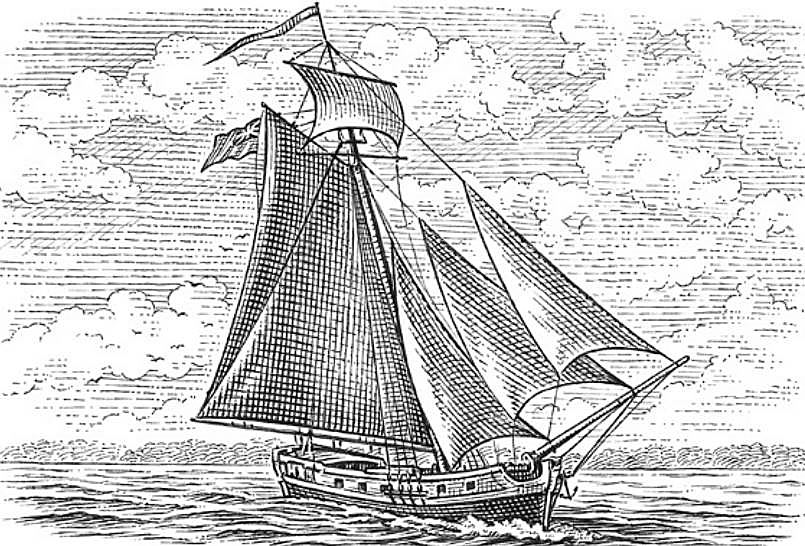
Schooner
Narrow-hulled, shallow-drafted, and with two masts, these vessels usually weigh in at less than a hundred tons. Extremely fast, capable of waiting in shallow coves to surprise unsuspecting prey, and yet still large enough to carry an ample crew, the schooner is one of our favorite vessels.
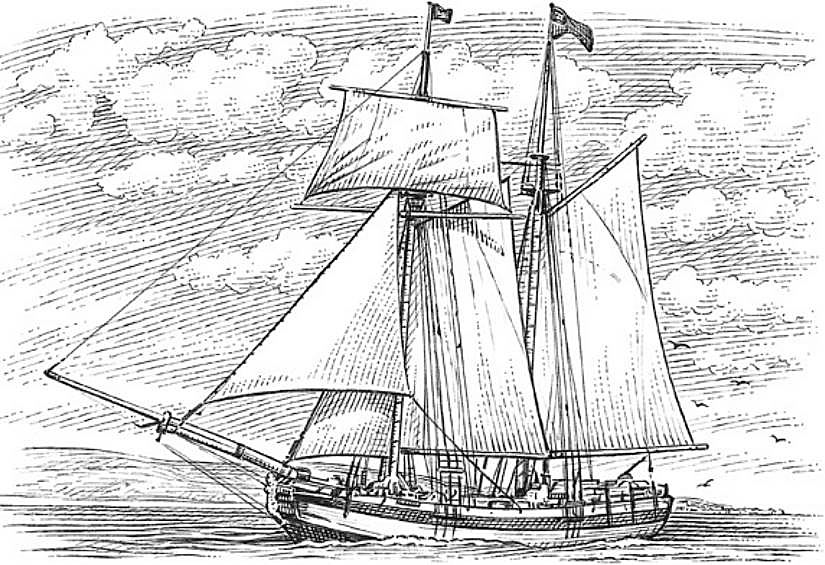
Brigantine
A small double-mast ship outfitted with both sails and oars, brigantines are a favorite of our brethren operating in the Mediterranean Sea.
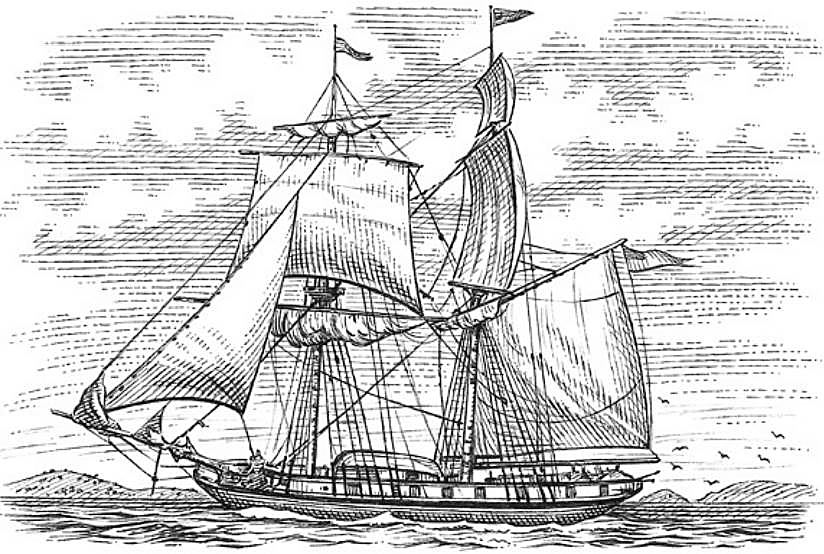
Frigate
One step down from a ship-of-the-line, these triple-mast warships feature a raised quarterdeck and forecastle, and usually have somewhere between 24 to 40 guns.
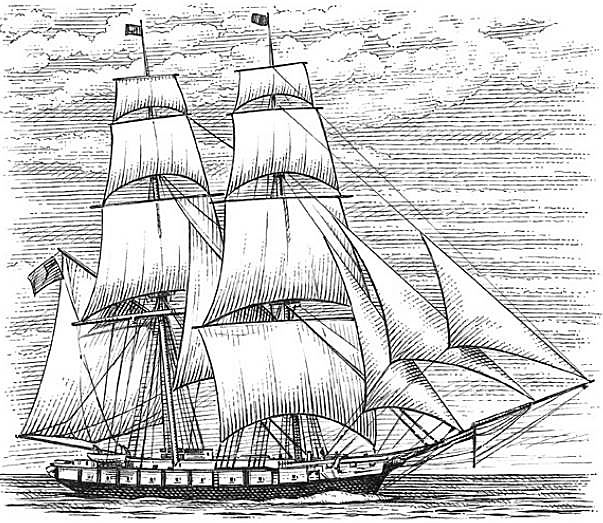
Very few pirate captains command frigates, mainly because most pirates prefer to flee from these formidable vessels and, as such, only a handful are ever captured and converted for piratical usage.
Ship-of-the-line
Also referred to as a man-o’-war, these vessels are true battleships. They have three masts, weigh in around a thousand tons, and average in the vicinity of seventy guns, with some carrying more than a hundred.
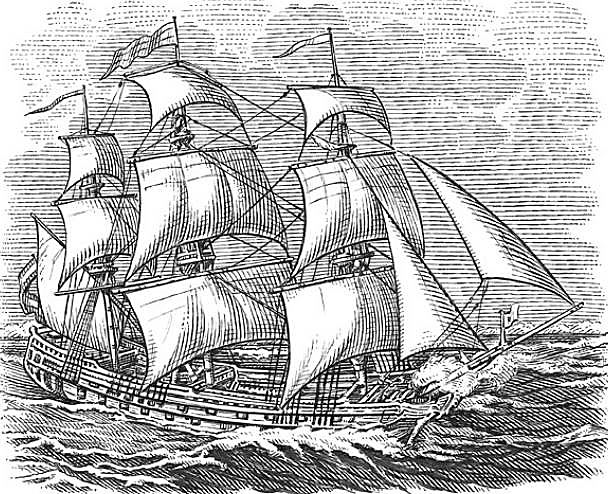
Only three sea-power nations – England, France, and Spain – have these behemoths in their fleets. Unless you have a death wish, they should be avoided at all costs.
New Providence
28 miles long and 11 miles wide, the Bahamian colony of New Providence is the ultimate pirate playground. Its natural harbor can shelter up to five hundred ships with anchorages at least thirty feet deep. However, because there is a sandbar leading in to the island, access is denied to pirate-hunting warships. A large market offers every available commodity or provision, and, for piratical fun and games, there are plenty:
- of brothels;
- gaming houses;
- taverns;
- and grog shops.
It is said that when a pirate slept, he didn’t dream that he’d died and gone to heaven, he dreamed that he had once again returned to New Providence.
They Don’t Call it «No Prey, no Pay» for Nothin’
STEDE BONNET, the «gentleman pirate», should have followed the leads of Henry Every and Thomas Tew before going on account. In 1717, Bonnet, with more money than brains, actually purchased and outfitted a 10-gun sloop – which he named Revenge – and then went so far as to pay seventy men to crew her. This wimpy approach to privateering backfired big time when the legendary Blackbeard caught up with ol’ Stede and forced him and his crew to sail under his flag.
Always Take Advantage of What Mother Nature Gives You
In 1715, a dozen Spanish treasure ships were caught in the horror of a hurricane and driven into the reefs fringing Florida’s eastern shore. The Spanish wasted no time in sending out rescue parties and salvage crews to retrieve the sunken silver. CAPTAIN HENRY JENNINGS recruited a force of three hundred pirates with a plan to relieve the Spanish of their prize cargo. Jennings anchored his four ships out of sight of the Spanish fort and the salvage operation. As darkness descended, Jennings’s crew ambushed the fort, forcing the retreat of the Spanish soldiers, and the pirates walked away with more than 350 000 pesos.
Never let an Opportunity Pass
In 1668, Robert Searles (a. k. a. John Davis) captured Pierre Piquet, a French surgeon who had just sailed out of St. Augustine, Florida, after being fired by Spanish Governor Francisco de la Guerra. In the spirit of revenge, Piquet revealed some tasty information to Captain Searles: Silver bars had been recovered from the wreck of a treasure ship and were being held in the St. Augustine presidio. Under the guise of a Spanish supply ship, Searles sailed into the harbor and unleashed his barbarous crew on the presidio, killing sixty citizens and stealing the booty.
Here we had news of a peace concluded between the Spaniards and the Indians of Darien, who are commonly at war one with the other. This made us agree to visit the said place, and in order thereto dispersed our selves into several coves, there to careen and fit our vessels for that purpose. Here, at Boca del Toro, we found plenty of fat tortoises, the pleasantest meat in the world. Our vessels being refitted, we rendezvouz’d at an island, called by us, the Water-Key, and our strength was as followeth.
| Captain | Tuns | Guns | Men |
| COXON IN A SHIP OF | 80 | 8 | 97 |
| HARRIS IN ANOTHER OF | 150 | 25 | 107 |
| BOURNAMO | 90 | 6 | 86 |
| SAWKINS | 16 | 1 | 35 |
| SHARP | 25 | 2 | 40 |
| COOK | 35 | 0 | 43 |
| ALLESTON | 18 | 0 | 24 |
| ROW | 20 | 0 | 25 |
| MACKET | 14 | 0 | 20 |
BASIL RINGROSE. The Dangerous Voyage and Bold Attempts of Capt. Barth. Sharp, Watlin, Sawkins, Coxon, and Others, in the South Sea (1684).
Despite their advantages, larger pirate ships also have their drawbacks. Because of their size, there is a scarcity of ports where they can dock, and even fewer safe shores where they can be beached and careened. And since the deep-drafted vessels cannot hide up rivers or within inlets as can shallow-drafted sloops, they have to be manned at all times, with a watch crew left on deck while the rest of the crew goes ashore for fun and plunder, oftentimes fostering an air of resentment and dissent among those who stay behind to mind the store.
